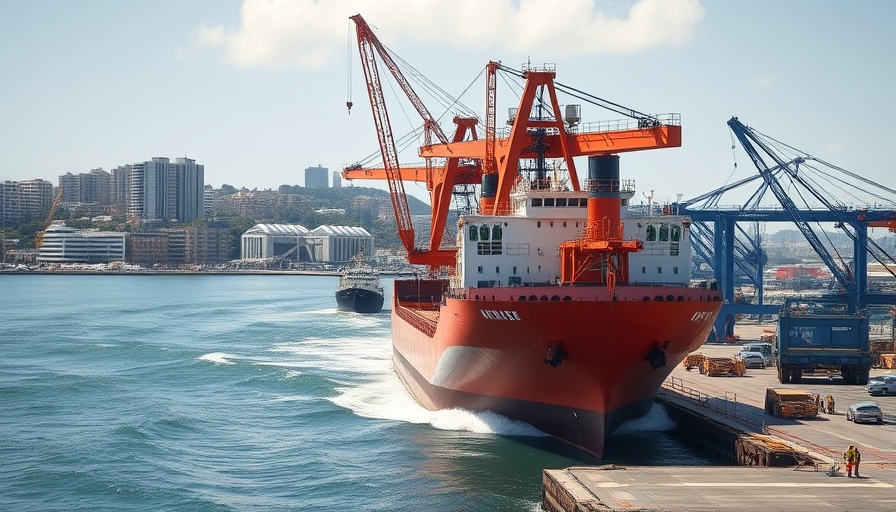
San Diego's Green Maritime Revolution: The Facts Behind the Initiative
The Port of San Diego, a pivotal hub for maritime operations in California, has recently announced remarkable progress in its Maritime Clean Air Strategy (MCAS). This initiative is not just a nod to environmental responsibility; it represents a fundamental shift in how port operations approach sustainability, combatting pollution with concrete actions and substantial investments. Since conducting its last air quality inventory in 2019, the port has achieved impressive reductions in harmful emissions: a 46% decrease in diesel particulate matter, a 32% drop in nitrogen oxides, and a commendable 10% reduction in carbon dioxide.
Investment that Matters: Financial Commitment to Clean Air
Through a committed financial strategy, the Port of San Diego and its partners have allocated over $227 million towards efforts encompassing maritime electrification and efficiency improvements. This investment continues to drive transformative projects ranging from upgrading tenant and service providers’ electric equipment to enhancing infrastructure at cargo and cruise terminals. Such steps not only promote cleaner air but also stimulate economic growth and innovation in the region.
A Multitude of Initiatives: What’s Happening Under the Surface?
The successful execution of MCAS has enabled the port to tick off approximately 80% of its set objectives. In pursuing these goals, the port has also attracted substantial grants and investments from both state and federal sources, highlighting the importance of public-private partnerships in achieving environmental targets. Recently awarded a $58.6 million EPA grant — with an additional $27.7 million match — the port plans to invest in crucial upgrades, including shore power systems for harbor craft and international vessels, in addition to newly acquired zero-emission heavy-duty trucks and cargo handling equipment.
Future Trends: What Lies Ahead for Environmetal Responsibility?
This initiative serves as a blueprint not only for other ports but for the larger shipping and logistics sectors grappling with the pressures of climate change. The clean air strategy is anticipated to pave the way for further innovations in sustainable port operations, potentially transforming the maritime industry from a significant polluter into a leading example of environmental responsibility.
Connecting the Community: Why This Matters to You
For the local community, the implications are significant. Cleaner air not only enhances public health but could also lead to increased tourism and economic activity in San Diego. Community outreach and workforce development programs associated with the MCAS will empower individuals and businesses to contribute to and benefit from the ongoing changes. Engaging with these initiatives can help residents connect with the efforts, reinforcing a shared commitment to sustainability.
As we look towards the future of maritime operations, the progress made at the Port of San Diego demonstrates the profound impact that strategic planning and investment can have on both environmental standards and economic growth. By following this model, other ports can contribute to a healthier planet while enhancing their operational efficiency, creating a lesson in sustainable growth that echoes far beyond the water’s edge.
 Add Row
Add Row  Add
Add 




Write A Comment